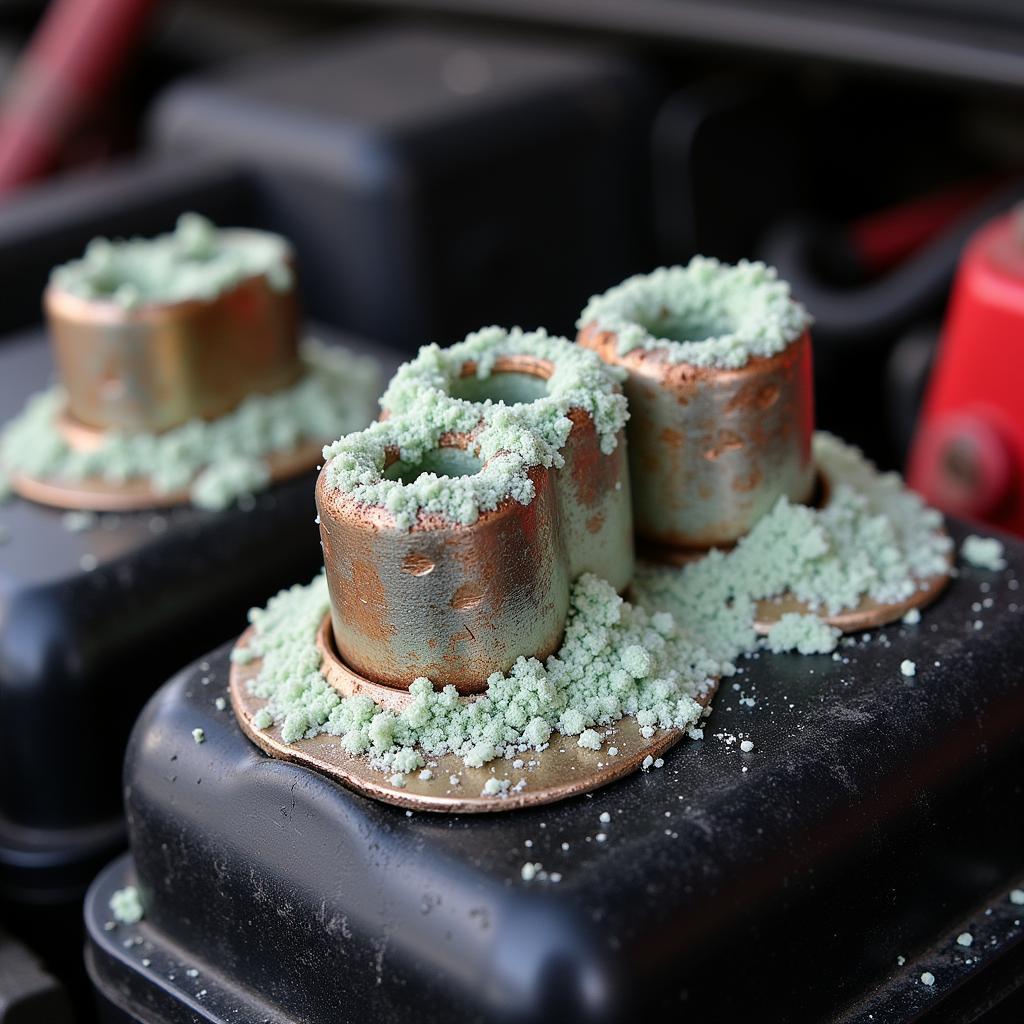A dead car battery is frustrating, especially when it keeps happening. If your battery keeps going flat, there’s an underlying issue that needs addressing. This article will guide you through the process of diagnosing and resolving this persistent problem, offering remote software solutions where applicable, and getting you back on the road.
Why Does My Car Battery Keep Dying?
A car battery doesn’t just die for no reason. Understanding the potential culprits is the first step to a permanent fix. The issue could stem from something as simple as leaving your headlights on, or it could be a sign of a more complex electrical problem.
Common Causes of a Flat Car Battery
There are several common reasons why your battery keeps going flat. These include:
- Parasitic Drain: This occurs when a component continues to draw power even when the car is off. Common culprits include interior lights, faulty door switches, or even aftermarket accessories.
- Old Battery: Like any battery, car batteries have a limited lifespan. Over time, their ability to hold a charge diminishes.
- Failing Alternator: The alternator recharges the battery while the engine is running. A faulty alternator won’t charge the battery effectively, leading to a flat battery.
- Extreme Temperatures: Both extreme heat and cold can affect battery performance. Cold weather can slow down the chemical reactions within the battery, reducing its capacity, while excessive heat can evaporate the electrolyte, shortening its lifespan.
- Short Drives: Short trips don’t give the alternator enough time to fully recharge the battery after starting the engine, especially in colder climates.
- Corroded Terminals: Corrosion on the battery terminals can disrupt the flow of electricity, preventing the battery from charging properly and starting the car.
 Corroded Car Battery Terminals
Corroded Car Battery Terminals
Diagnosing the Problem: A Step-by-Step Guide
Identifying the root cause is crucial. Here’s how to diagnose why your battery keeps going flat:
- Visual Inspection: Check the battery terminals for corrosion. Clean them with a wire brush and baking soda solution if necessary.
- Battery Test: Use a multimeter to check the battery voltage. A fully charged battery should read around 12.6 volts.
- Parasitic Drain Test: With the car off and all accessories turned off, disconnect the negative battery cable and connect a multimeter in series between the cable and the negative terminal. A reading higher than 50 milliamps usually indicates a parasitic drain.
- Alternator Test: With the engine running, use a multimeter to check the voltage at the battery terminals. It should read between 13.5 and 14.5 volts.
Remote Diagnostics and Software Solutions
In modern vehicles, remote diagnostics and software solutions can be extremely valuable in identifying complex electrical issues. These solutions can often pinpoint the faulty module or component causing the battery drain, saving you time and money. Contact a qualified automotive electrician specializing in remote diagnostics for assistance.
“Remote diagnostics can be a game-changer in identifying intermittent faults that are difficult to reproduce in a workshop environment,” says John Smith, Senior Automotive Electrical Engineer at Advanced Auto Solutions. “We can often identify and resolve the issue without the vehicle ever needing to come into the shop.”
Preventing Future Battery Problems
Here are a few proactive measures to prevent future battery issues:
- Regular Maintenance: Have your battery and charging system checked regularly, especially before winter.
- Limit Short Trips: If possible, combine short trips or take longer routes to give the alternator sufficient time to recharge the battery.
- Turn Off Accessories: Ensure all lights and accessories are turned off when the car is not in use.
- Keep Terminals Clean: Regularly clean the battery terminals to prevent corrosion.
Fixing the Problem: What are My Options?
Depending on the diagnosis, the solution could range from simply cleaning the battery terminals to replacing the alternator or a faulty electronic module. In some cases, a software update might be necessary.
“Addressing the root cause is crucial. Simply replacing the battery without fixing the underlying issue is like putting a band-aid on a broken bone,” explains Sarah Jones, Lead Technician at Auto Electric Experts. “It might work temporarily, but the problem will inevitably return.”
 Replacing a Car Battery
Replacing a Car Battery
Conclusion
A battery that keeps going flat is more than just an inconvenience. It’s a sign of an underlying problem that needs addressing. By following the diagnostic steps outlined in this article and considering remote diagnostic solutions, you can identify and resolve the issue, preventing future headaches and keeping your car running smoothly. Remember to maintain your battery and charging system regularly to avoid future problems.
FAQ
- How long should a car battery last? Typically, a car battery lasts between 3 and 5 years.
- Can a bad alternator drain a battery? Yes, a failing alternator will not charge the battery properly, leading to a drain.
- How do I know if my car has a parasitic drain? A parasitic drain test using a multimeter can help identify this issue.
- Can extreme temperatures affect battery life? Yes, both extreme heat and cold can negatively impact battery performance and lifespan.
- What is the voltage of a fully charged car battery? A fully charged car battery should read around 12.6 volts.
- Can remote diagnostics help with battery problems? Yes, remote diagnostics can pinpoint complex electrical faults that contribute to battery drain.
- How can I prevent my car battery from going flat? Regular maintenance, limiting short trips, and turning off accessories can help prevent battery drain.

